Find out what makes nigiri different from sushi and if musubi is the same as inarizushi in this quick guide to understanding Japanese sushi-related terms.
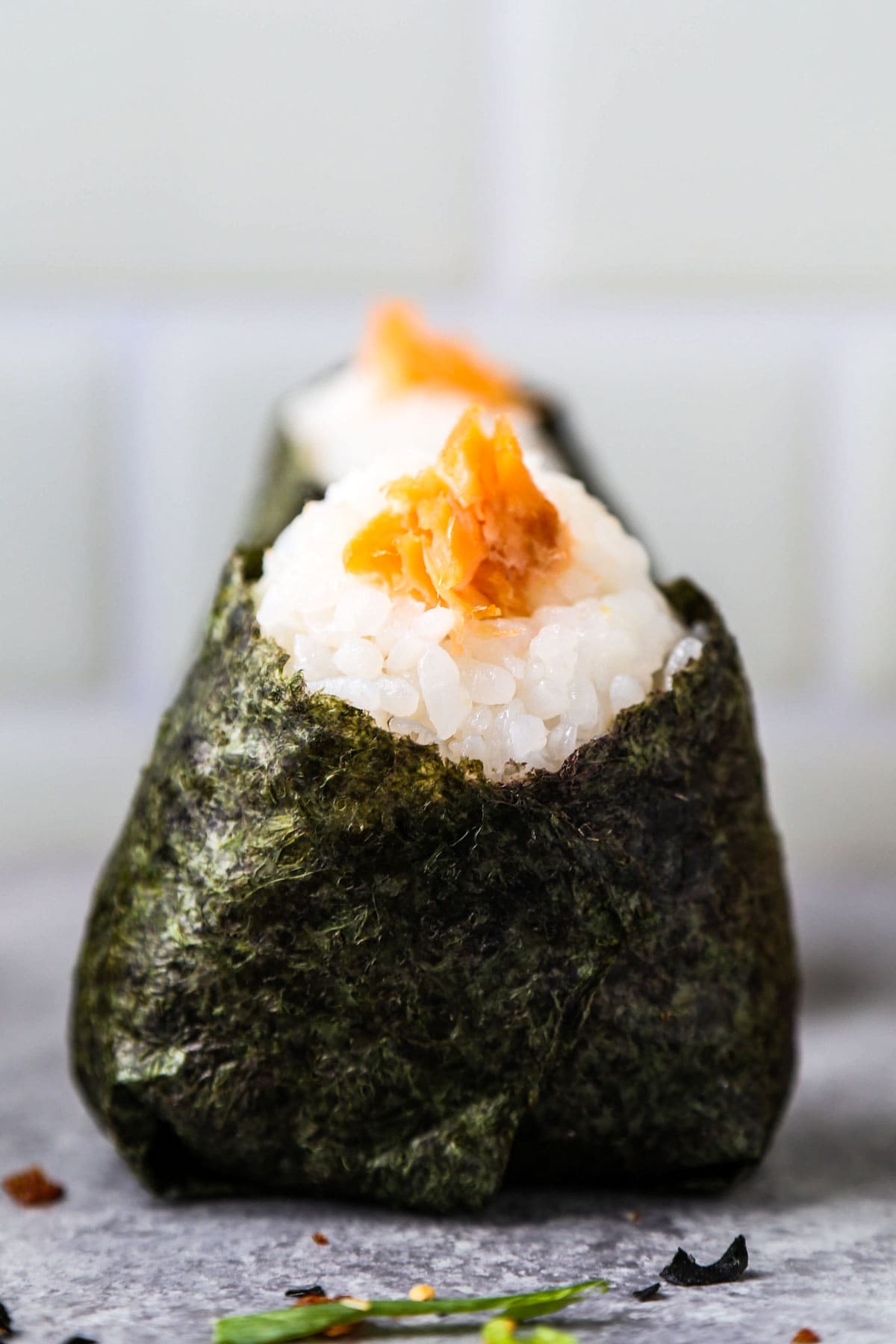
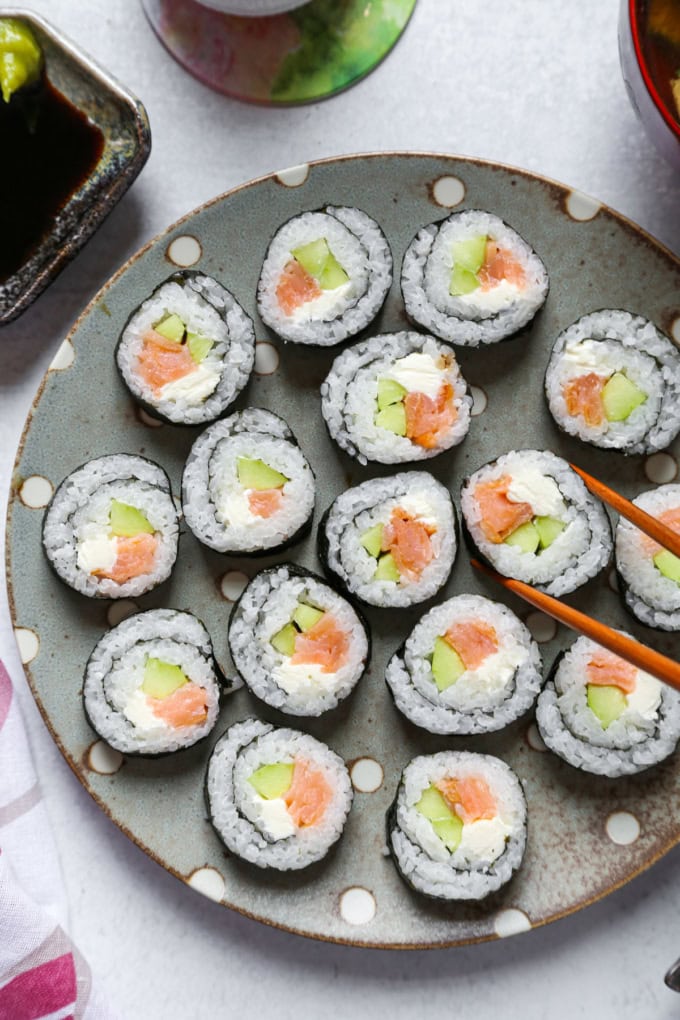
What would you do if I gave you the option of having either nigiri sushi, hosomaki, inari sushi or a hand roll? Which one would you pick?
Scratching your head? You’re not the only one.
Ordering sushi can get a little confusing if you are not familiar with the terms. But it’s actually not that complicated as you will see in this post. I will explain clearly what each type of rice item is called and in what category they belong.
Table of contents
What is Sushi?
Sushi is rice seasoned with salt, sugar and vinegar. The literal translation of the word sushi is vinegar rice. It comes in many different varieties. Basically, sushi is a general word for any food that comes with vinegared rice. Therefore maki rolls are sushi, nigiri sushi is sushi, temari sushi is also sushi, and the same goes for inari sushi. However, onigiri is not considered sushi because it’s made with plain rice and not vinegared rice.
Nigiri (Musubi)

Nigiri, or onigiri (the o- being an honorary prefix) is the same thing as musubi. The preferred term varies by household or region. For example, I use the word onigiri 95% of the time while my mother prefers the term musubi.
Nigiri are rice balls molded by hand into a triangle or other shape, and flavored with various ingredients. The literal meaning for nigiri is to grasp or hold something. Fillings such as pickled plum (umeboshi), kombu (seasoned seaweed), bonito flakes with soy sauce (okaka), and spicy tuna mayonnaise, are placed in the center of the rice ball and wrapped with a sheet of nori. Other nigiri/musubi types can be served without nori and only seasoned with salt or sesame seeds. Yaki onigiri are plain rice balls that are brushed with soy sauce and grilled over charcoal.
Nigiri Sushi (Nigirizushi)

Nigiri sushi, or nigirizushi, (握り寿司) is vinegar flavored rice shaped into small oblong mounds and topped with either raw fish, eggs or vegetables. They are usually served in pairs or can come on wooden trays as part of a set meal. It’s what we think of when we hear the word sushi – the classic one bite dish we’ve all come to love so much.
Maki Sushi
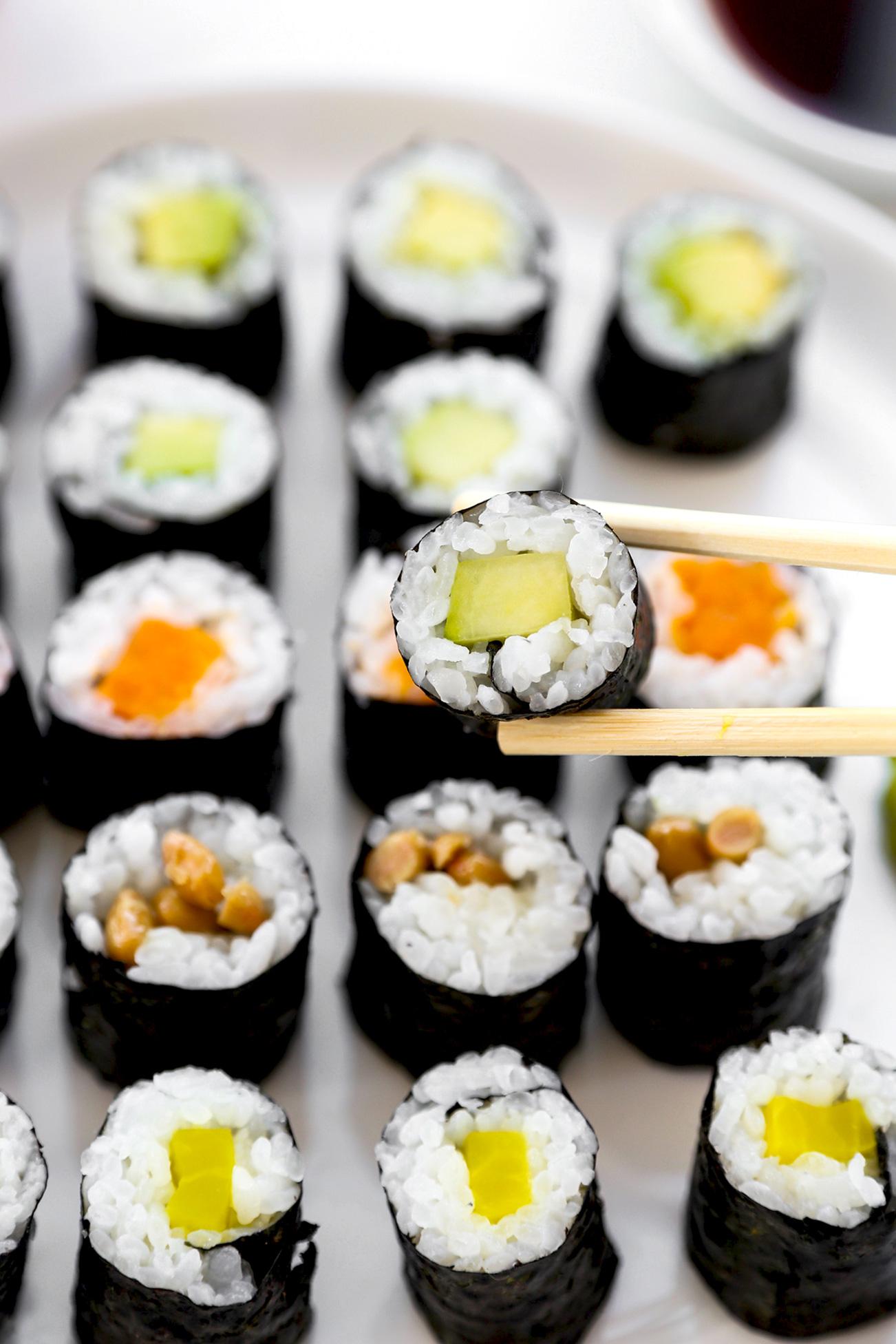
Maki sushi are rice rolls with nori wrapped on the outside. There are different types of maki rolls:
- Futomaki (太巻き): These are the fatter rolls containing more than one ingredients in the center. For example, California rolls and Philadelphia rolls are futomaki rolls.
- Hosomaki rolls (細巻き): These are thinner maki rolls containing only one filling. Popular hosomaki rolls include spicy tuna rolls, salmon rolls and cucumber rolls (kappa maki).
- Temaki: Temaki (手巻き) are hand rolls. They look like rice cones made with nori (dried seaweed) and stuffed with one or various ingredients.
Uramaki
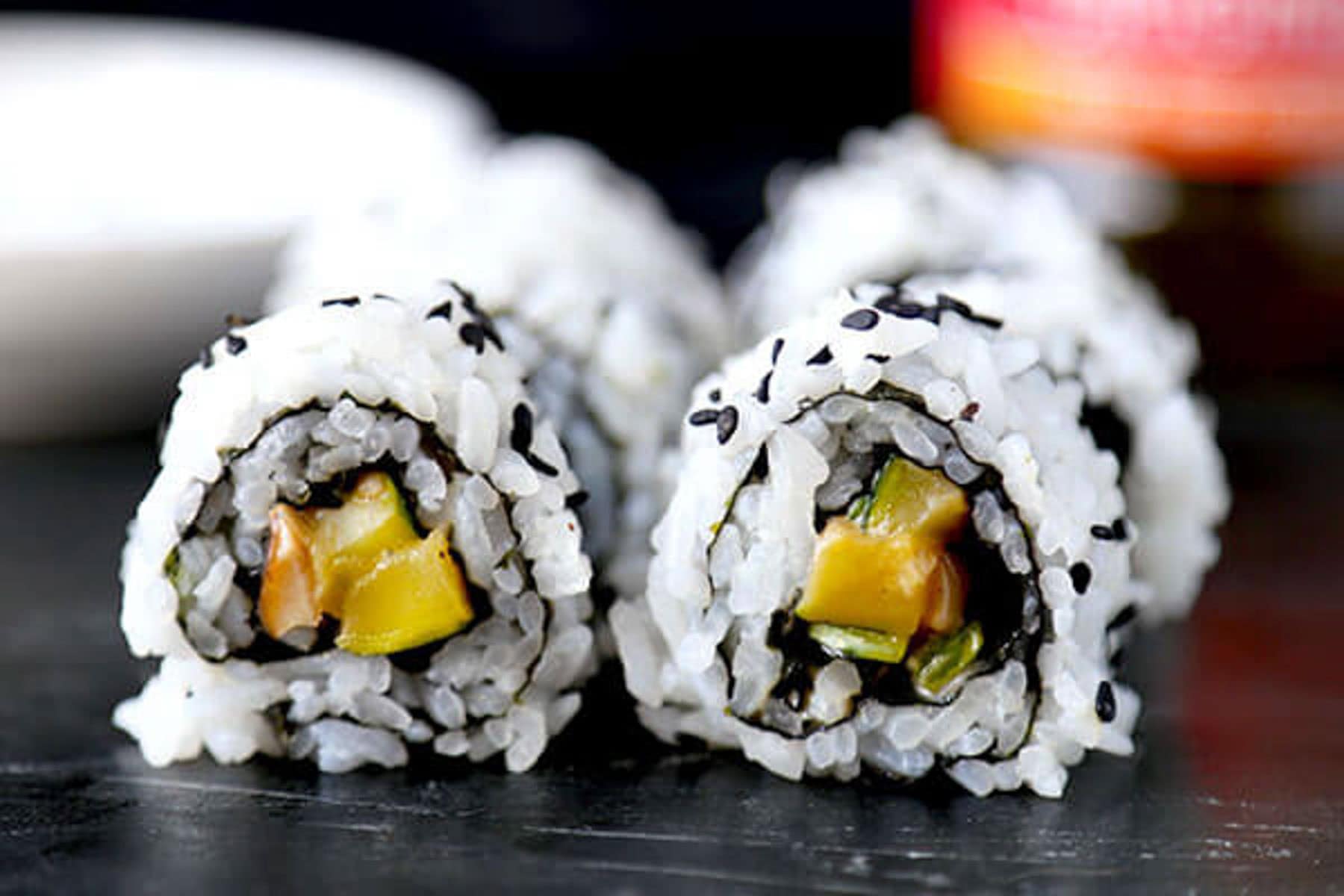
Uramaki (裏巻き) are inside out rolls where the nori is placed between the rice and the filling. Most dragons rolls are served uramaki style.
Inari Sushi
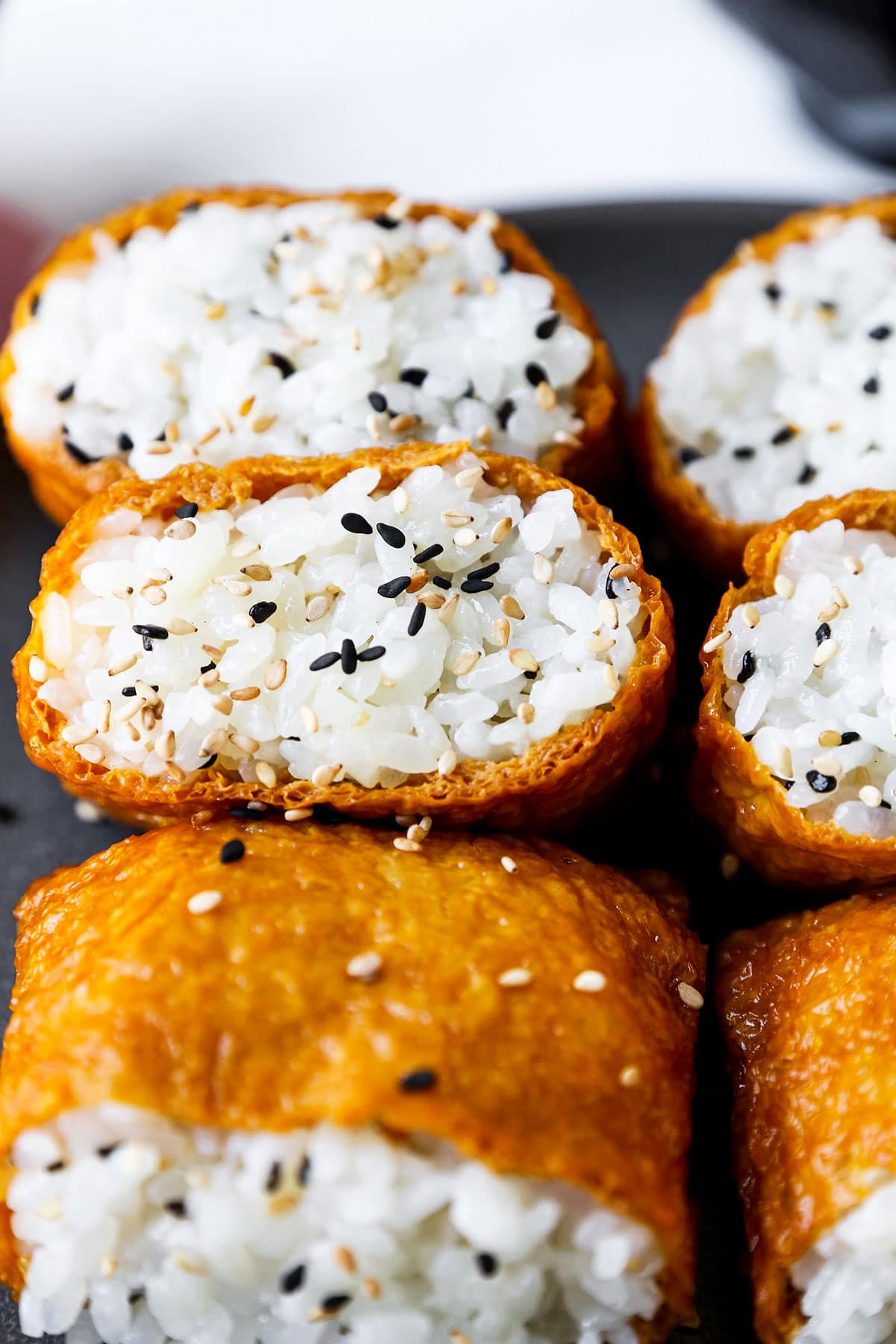
Inari sushi, or inarizushi, are deep fried tofu pockets filled with seasoned sushi rice. Unlike other sushi, inari sushi is sweeter than savory, and somewhat wet in texture. That’s because the fried tofu pockets, called inariage, are soaked in a mixture of dashi, soy sauce and sugar. They are then squeezed until most of the liquid is out and then filled with sushi rice.
Sashimi
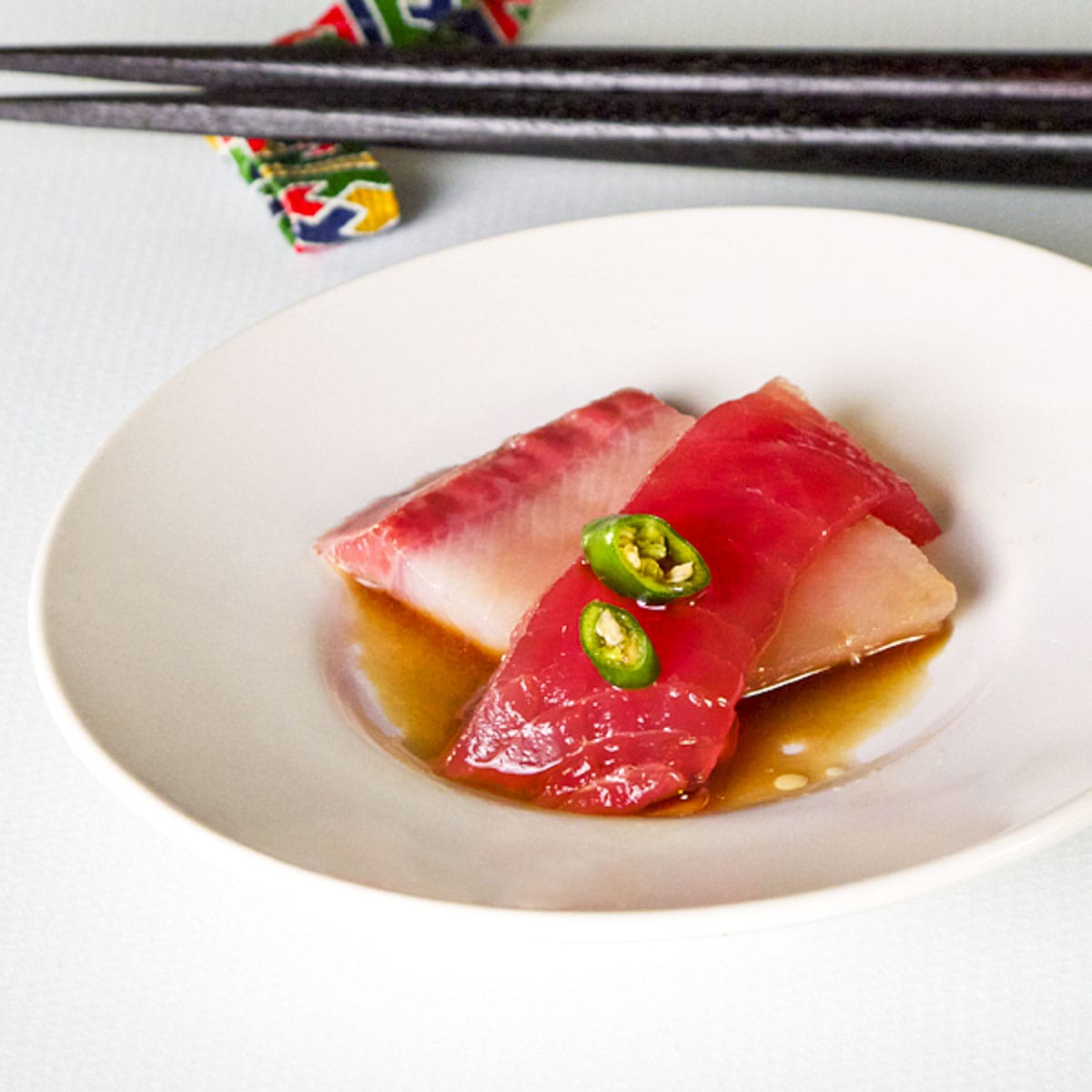
This one is the easiest to remember because there is simply never any rice involved. What most westerners know as sashimi are pieces of raw fish served with a side of pickled ginger and wasabi. But sashimi can also be raw meat, chicken, tofu skin or even vegetables (as long as they are served raw).
The term sashimi literally translates to “pierced body/meat”. It may derive from the culinary practice of sticking the fish’s tail and fin to the slices in identifying the fish being eaten.
Recap
Here is a chart I create that recaps all of the information listed above. Use it to quickly familiarize yourself with the different terms used to describe sushi and nigiri.
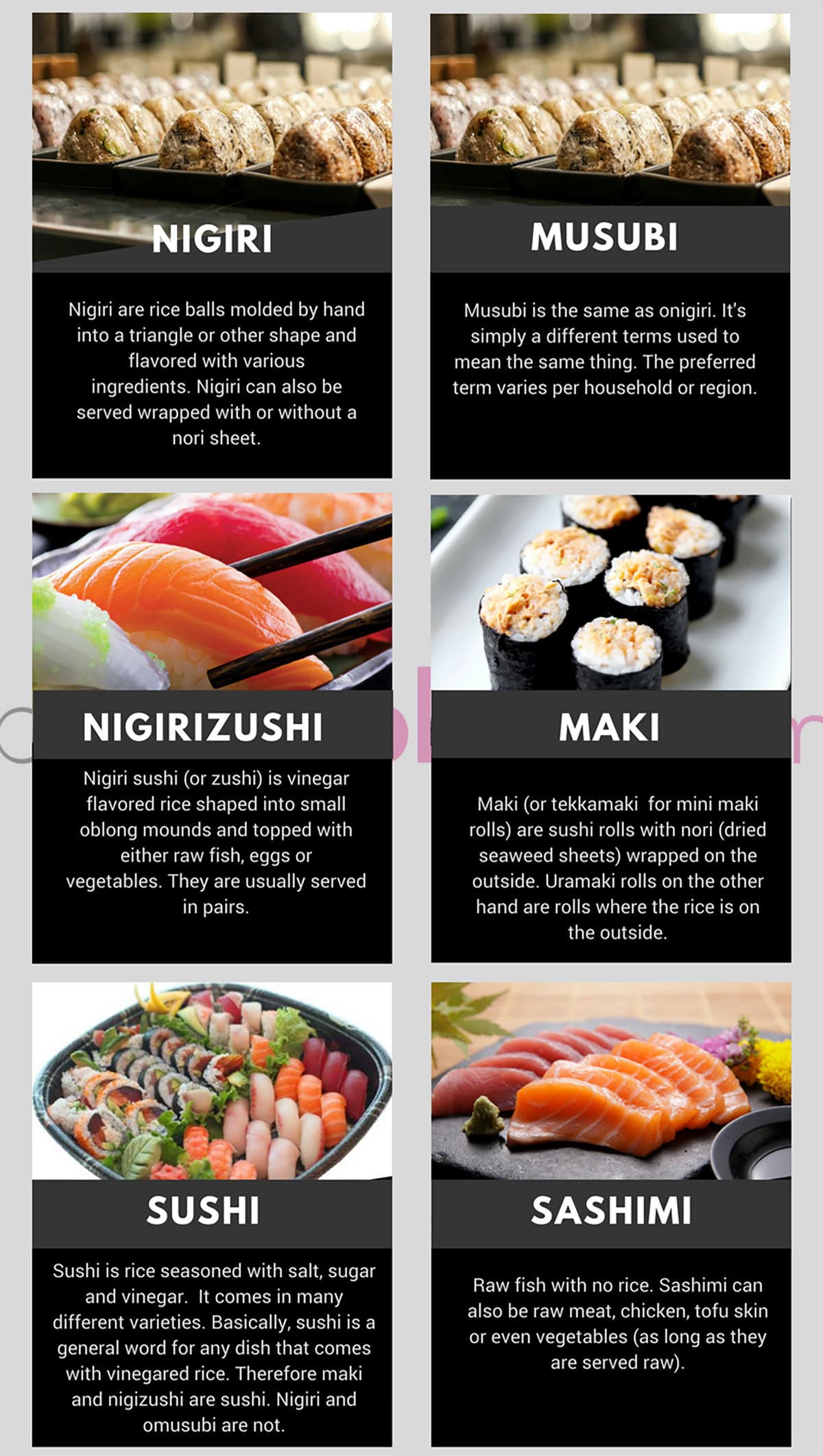















Wonderful information. Thank you.
Just a little addition: Inari Sushi are also affectionately known as Footballs, obviously because of their color and shape. Because of their sweeter flavor and absence of fish, Inari are a nice gateway sushi to introduce children and adults, alike, and a favorite of pescaphobes!
That’s so true Joyce, thank you for sharing this! 🙂
Very helpful!
Thank you!!!
Thankyou – lovely article
Very Informative. I had always this question about Sushi and sashimi. Thanks for that
Thank you for ALL of the information! I am confused about the Nigiri portion of the blog. In the very beginning under the heading of “Nigiri vs Musubi”, there is a photo of the rice ball with the description “Nigiri are rice balls molded by hand…..and flavored with various ingredients”. Further down under Nigiri vs Musubi vs Maki vs etc., there’s a photo with different types and descriptions of about 8 items. In the lower left corner is the sushi. The description reads, “basically sushi is a general word for any dish that comes with vinegered rice. Therefore, maki and nigizushi are sushi. Nigiri and omusibi are not.” Please help me to understand, because in the first description, I understood that Nigiri IS the flavored Rice? Will be visiting a high profile Japanese restaurant in the near future, and would like to understand what I’m ordering. Thank you in advance for clarification as well as ALL of the great advice!
Hi Sammie! The difference is in the rice. Nigiri is flavored with ingredients but the rice itself isn’t. So nigiri can come with a bonito flake or pickled plum filling but the rice is not seasoned with vinegar.
On the other hand the rice used for nigirizushi is flavored with vinegar. I hope this helps 🙂
Thank you for this much needed info. I love it all regardless of the name.
I love your site. You have some very good receipes.
Thank You,
JJ
Thank you JJ! 🙂
I am always interested in learning the origins of food names as well as food culture; I enjoyed your post.
In the United States, Musubi almost always refers to a Hawaiian maki made with Spam and teriyaki sauce. Spam is a salty lunchmeat that comes in a square can. It became popular in Hawaii during the war, when it was shipped over for the American Sailors stationed there.
I enjoyed learning about the different names for what we often just call “sushi”. Curious that you made no mention of chirashizushi, which is made with sushi rice and various ingredients typical found in nigiri sushi. Perhaps those are also recent inventions here in the United States? It is fascinating how differs countries adapt something from elsewhere, with results that are similar, but not identical.
Hi Gabrielle, chirashizushi is indeed a very Japanese thing (my husband’s favorite in fact!) I thought about adding it to the list but wanted to stick to the types of food you can hold in your hand as opposed to a bowl, so as not get too confusing 🙂
Thanks Caroline. I’ve a passion for food culture, particularly Japanese,, so I enjoy your blog. I’ve especially appreciated the recipes.
Thank you so much Gabrielle! I’m planning on diving a bit deeper into the food culture this year (instead of only sharing recipes), it makes me really happy to know you have a passion for it 🙂